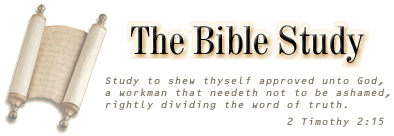 |
Transubstantiation
Transubstantiation is the name given to the Roman
doctrine that through the blessing of the priest at mass the wafer
becomes the very body and blood of the Lord. The following brief notes
show the strength of the Biblical evidence against this error.
a. Did Jesus sitting at the table take
of his own body and break in pieces and give it to the disciples?
b. And did the disciples, with their
outlook strongly nurtured on the ordinances of the Law, calmly and
without a qualm receive the cup as the very blood of their Master?
c. “Ye do show the Lord’s death till he
come” (1 Cor. 11 : 26) plainly
proclaims his absence, not his real presence. Cp. also
Acts 3 : 21.
d. When he gave it to the disciples
Jesus called the wine “the fruit of the vine” (Luke
22 : 18), and Paul refers to the elements as “bread” and “the
cup”.
e. “This (bread) is my body” is
interpreted by “This cup is the new covenant”. As the cup is not
literally the covenant (but symbolizes it), so also the bread is not
literally his body.
f. Christ’s body is now no longer
subject to corruption: Acts 2 : 25–27.
How then in the mass does it become part of the corruptible body of
the one partaking?
g. The “host” is made by man and then
worshipped by man! See the condemnation of such a practice:
Isaiah 44 : 16–20.
h. If Christ himself is literally
present, then is the bread no longer a sacrament or symbol or emblem
but the very thing itself.
i. There are many things in our
religion which are beyond proof by our five senses, e.g. the
intercession of Christ at the Father’s right hand. But we can come
to know these truths through the exercise of our senses (in
the reading of the Bible). But transubstantiation is contrary
to the evidences of our senses. See 1 John 1 :
1–3.
j. Hebrews 7
shows the priesthood of the Law to have been “weak and unprofitable”
on the following grounds:
1. Many priests, because mortal;
verse 23.
2. They needed to offer daily for their
own sins; verse 27.
3. They are men of infirmity; verse
28.
In all these respects Romish priests
offering the mass are condemned.
k. The Apostles and their successors
had many instructions to teach, exhort, instruct, baptize, but in
all the New Testament there is no hint of a command or commission to
offer sacrifice.
l. Heb. 7 : 28:
“So Christ was once offered” (Gk., once for all). But the
Roman church has “offered” him many thousands of times.
m. “Ye have the poor always with you;
but me ye have not always” (Matt. 26 :
11). These words contradict the assumption that Christ is
present in the mass.
Source: Harry Whittaker

|
|
